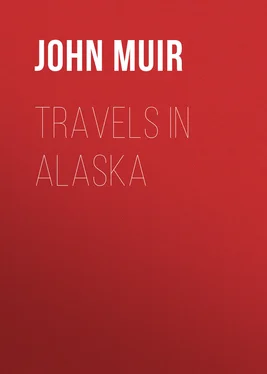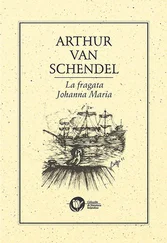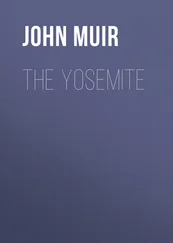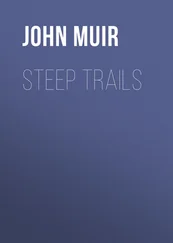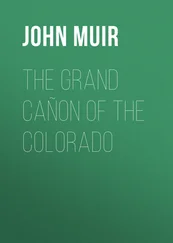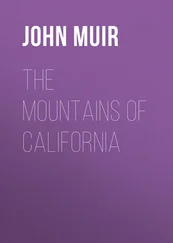John Muir - Travels in Alaska
Здесь есть возможность читать онлайн «John Muir - Travels in Alaska» — ознакомительный отрывок электронной книги совершенно бесплатно, а после прочтения отрывка купить полную версию. В некоторых случаях можно слушать аудио, скачать через торрент в формате fb2 и присутствует краткое содержание. Жанр: Путешествия и география, История, foreign_edu, foreign_antique, foreign_prose, на английском языке. Описание произведения, (предисловие) а так же отзывы посетителей доступны на портале библиотеки ЛибКат.
- Название:Travels in Alaska
- Автор:
- Жанр:
- Год:неизвестен
- ISBN:нет данных
- Рейтинг книги:4 / 5. Голосов: 1
-
Избранное:Добавить в избранное
- Отзывы:
-
Ваша оценка:
- 80
- 1
- 2
- 3
- 4
- 5
Travels in Alaska: краткое содержание, описание и аннотация
Предлагаем к чтению аннотацию, описание, краткое содержание или предисловие (зависит от того, что написал сам автор книги «Travels in Alaska»). Если вы не нашли необходимую информацию о книге — напишите в комментариях, мы постараемся отыскать её.
Travels in Alaska — читать онлайн ознакомительный отрывок
Ниже представлен текст книги, разбитый по страницам. Система сохранения места последней прочитанной страницы, позволяет с удобством читать онлайн бесплатно книгу «Travels in Alaska», без необходимости каждый раз заново искать на чём Вы остановились. Поставьте закладку, и сможете в любой момент перейти на страницу, на которой закончили чтение.
Интервал:
Закладка:
The species forming the bulk of the woods here is the Douglas spruce ( Pseudotsuga douglasii ), one of the greatest of the western giants. A specimen that I measured near Olympia was about three hundred feet in height and twelve feet in diameter four feet above the ground. It is a widely distributed tree, extending northward through British Columbia, southward through Oregon and California, and eastward to the Rocky Mountains. The timber is used for shipbuilding, spars, piles, and the framework of houses, bridges, etc. In the California lumber markets it is known as “Oregon pine.” In Utah, where it is common on the Wahsatch Mountains, it is called “red pine.” In California, on the western slope of the Sierra Nevada, it forms, in company with the yellow pine, sugar pine, and incense cedar, a pretty well-defined belt at a height of from three to six thousand feet above the sea; but it is only in Oregon and Washington, especially in this Puget Sound region, that it reaches its very grandest development,–tall, straight, and strong, growing down close to tidewater.
All the towns of the Sound had a hopeful, thrifty aspect. Port Townsend, picturesquely located on a grassy bluff, was the port of clearance for vessels sailing to foreign parts. Seattle was famed for its coal-mines, and claimed to be the coming town of the North Pacific Coast. So also did its rival, Tacoma, which had been selected as the terminus of the much-talked-of Northern Pacific Railway. Several coal-veins of astonishing thickness were discovered the winter before on the Carbon River, to the east of Tacoma, one of them said to be no less than twenty-one feet, another twenty feet, another fourteen, with many smaller ones, the aggregate thickness of all the veins being upwards of a hundred feet. Large deposits of magnetic iron ore and brown hematite, together with limestone, had been discovered in advantageous proximity to the coal, making a bright outlook for the Sound region in general in connection with its railroad hopes, its unrivaled timber resources, and its far-reaching geographical relations.
After spending a few weeks in the Puget Sound with a friend from San Francisco, we engaged passage on the little mail steamer California, at Portland, Oregon, for Alaska. The sail down the broad lower reaches of the Columbia and across its foamy bar, around Cape Flattery, and up the Juan de Fuca Strait, was delightful; and after calling again at Victoria and Port Townsend we got fairly off for icy Alaska.
Chapter II
Alexander Archipelago and the Home I found in Alaska
To the lover of pure wildness Alaska is one of the most wonderful countries in the world. No excursion that I know of may be made into any other American wilderness where so marvelous an abundance of noble, newborn scenery is so charmingly brought to view as on the trip through the Alexander Archipelago to Fort Wrangell and Sitka. Gazing from the deck of the steamer, one is borne smoothly over calm blue waters, through the midst of countless forest-clad islands. The ordinary discomforts of a sea voyage are not felt, for nearly all the whole long way is on inland waters that are about as waveless as rivers and lakes. So numerous are the islands that they seem to have been sown broadcast; long tapering vistas between the largest of them open in every direction.
Day after day in the fine weather we enjoyed, we seemed to float in true fairyland, each succeeding view seeming more and more beautiful, the one we chanced to have before us the most surprisingly beautiful of all. Never before this had I been embosomed in scenery so hopelessly beyond description. To sketch picturesque bits, definitely bounded, is comparatively easy–a lake in the woods, a glacier meadow, or a cascade in its dell; or even a grand master view of mountains beheld from some commanding outlook after climbing from height to height above the forests. These may be attempted, and more or less telling pictures made of them; but in these coast landscapes there is such indefinite, on-leading expansiveness, such a multitude of features without apparent redundance, their lines graduating delicately into one another in endless succession, while the whole is so fine, so tender, so ethereal, that all pen-work seems hopelessly unavailing. Tracing shining ways through fiord and sound, past forests and waterfalls, islands and mountains and far azure headlands, it seems as if surely we must at length reach the very paradise of the poets, the abode of the blessed.
Some idea of the wealth of this scenery may be gained from the fact that the coast-line of Alaska is about twenty-six thousand miles long, more than twice as long as all the rest of the United States. The islands of the Alexander Archipelago, with the straits, channels, canals, sounds, passages, and fiords, form an intricate web of land and water embroidery sixty or seventy miles wide, fringing the lofty icy chain of coast mountains from Puget Sound to Cook Inlet; and, with infinite variety, the general pattern is harmonious throughout its whole extent of nearly a thousand miles. Here you glide into a narrow channel hemmed in by mountain walls, forested down to the water's edge, where there is no distant view, and your attention is concentrated on the objects close about you–the crowded spires of the spruces and hemlocks rising higher and higher on the steep green slopes; stripes of paler green where winter avalanches have cleared away the trees, allowing grasses and willows to spring up; zigzags of cascades appearing and disappearing among the bushes and trees; short, steep glens with brawling streams hidden beneath alder and dogwood, seen only where they emerge on the brown algæ of the shore; and retreating hollows, with lingering snow-banks marking the fountains of ancient glaciers. The steamer is often so near the shore that you may distinctly see the cones clustered on the tops of the trees, and the ferns and bushes at their feet.
But new scenes are brought to view with magical rapidity. Rounding some bossy cape, the eye is called away into far-reaching vistas, bounded on either hand by headlands in charming array, one dipping gracefully beyond another and growing fainter and more ethereal in the distance. The tranquil channel stretching river-like between, may be stirred here and there by the silvery plashing of upspringing salmon, or by flocks of white gulls floating like water-lilies among the sun spangles; while mellow, tempered sunshine is streaming over all, blending sky, land, and water in pale, misty blue. Then, while you are dreamily gazing into the depths of this leafy ocean lane, the little steamer, seeming hardly larger than a duck, turning into some passage not visible until the moment of entering it, glides into a wide expanse–a sound filled with islands, sprinkled and clustered in forms and compositions such as nature alone can invent; some of them so small the trees growing on them seem like single handfuls culled from the neighboring woods and set in the water to keep them fresh, while here and there at wide intervals you may notice bare rocks just above the water, mere dots punctuating grand, outswelling sentences of islands.
The variety we find, both as to the contours and the collocation of the islands, is due chiefly to differences in the structure and composition of their rocks, and the unequal glacial denudation different portions of the coast were subjected to. This influence must have been especially heavy toward the end of the glacial period, when the main ice-sheet began to break up into separate glaciers. Moreover, the mountains of the larger islands nourished local glaciers, some of them of considerable size, which sculptured their summits and sides, forming in some cases wide cirques with cañons or valleys leading down from them into the channels and sounds. These causes have produced much of the bewildering variety of which nature is so fond, but none the less will the studious observer see the underlying harmony–the general trend of the islands in the direction of the flow of the main ice-mantle from the mountains of the Coast Range, more or less varied by subordinate foothill ridges and mountains. Furthermore, all the islands, great and small, as well as the headlands and promontories of the mainland, are seen to have a rounded, over-rubbed appearance produced by the over-sweeping ice-flood during the period of greatest glacial abundance.
Читать дальшеИнтервал:
Закладка:
Похожие книги на «Travels in Alaska»
Представляем Вашему вниманию похожие книги на «Travels in Alaska» списком для выбора. Мы отобрали схожую по названию и смыслу литературу в надежде предоставить читателям больше вариантов отыскать новые, интересные, ещё непрочитанные произведения.
Обсуждение, отзывы о книге «Travels in Alaska» и просто собственные мнения читателей. Оставьте ваши комментарии, напишите, что Вы думаете о произведении, его смысле или главных героях. Укажите что конкретно понравилось, а что нет, и почему Вы так считаете.
